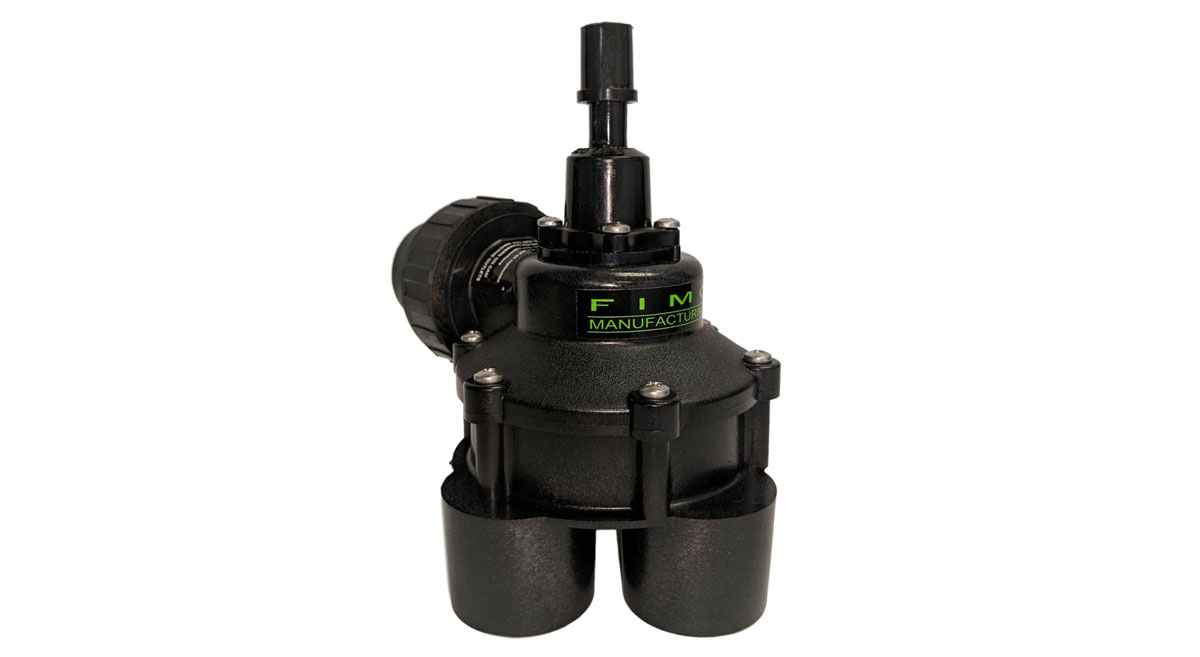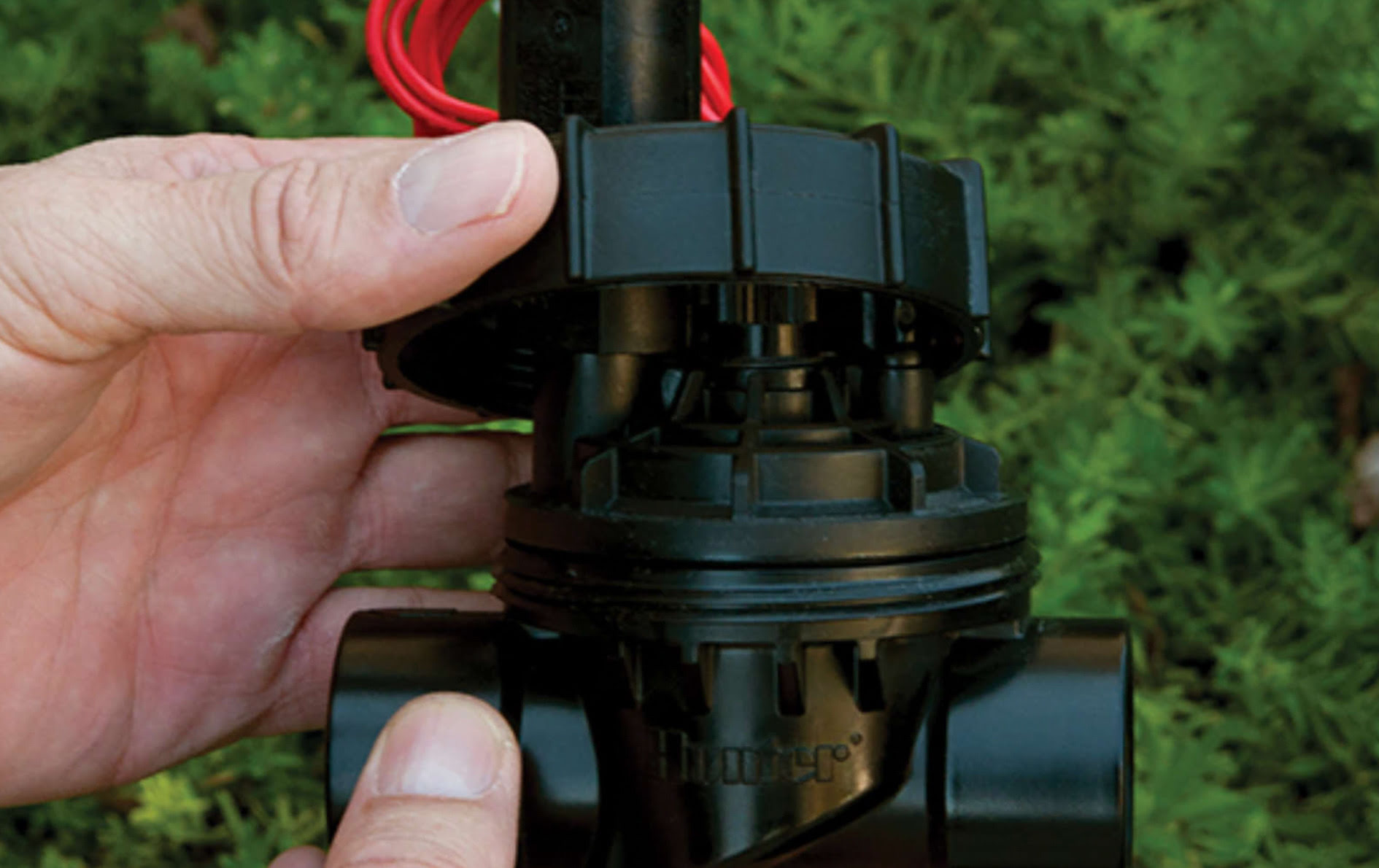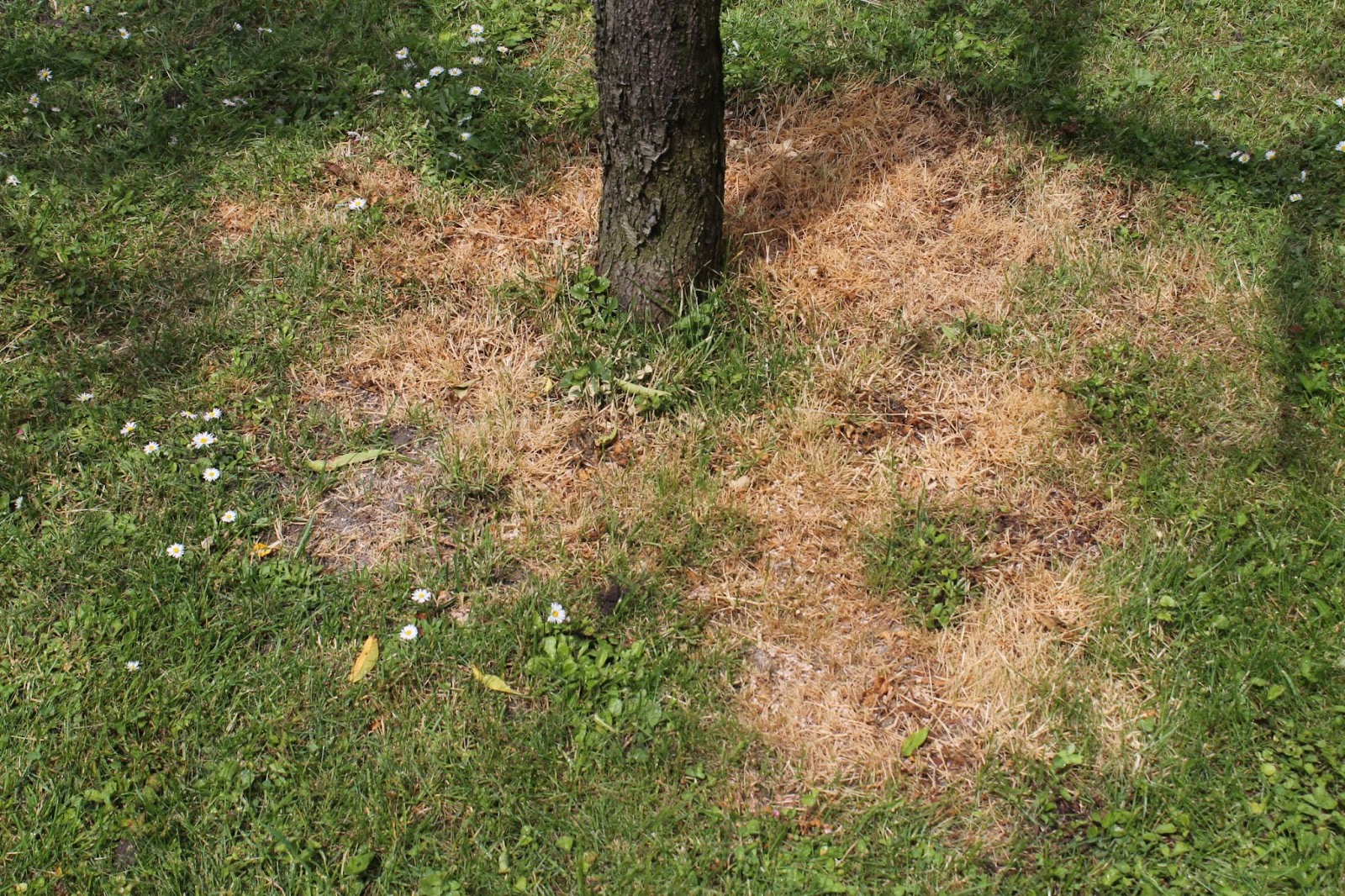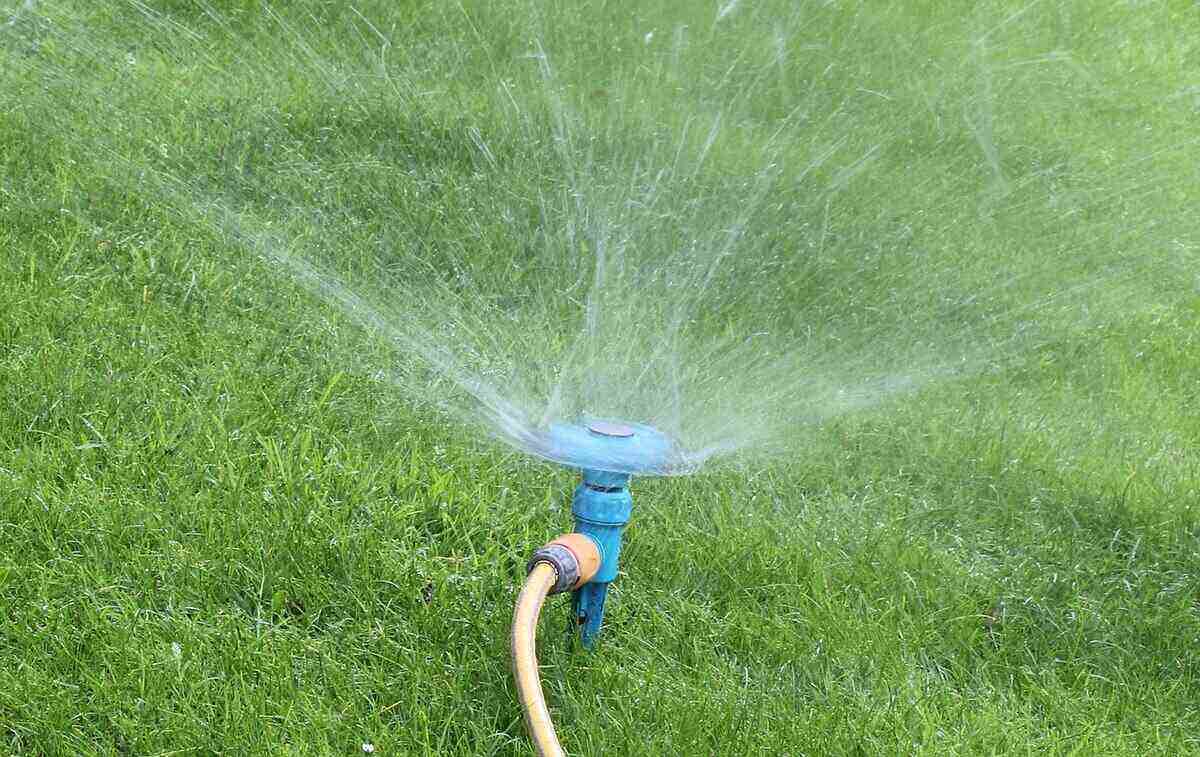Home>Gardening Tips and Tricks>Problem Solving>How Does An Irrigation Valve Work


Problem Solving
How Does An Irrigation Valve Work
Modified: January 22, 2024
Learn how irrigation valves work and discover effective problem-solving techniques to ensure optimal irrigation for your landscape.
(Many of the links in this article redirect to a specific reviewed product. Your purchase of these products through affiliate links helps to generate commission for Chicagolandgardening.com, at no extra cost. Learn more)
Table of Contents
Introduction
When it comes to maintaining a lush and vibrant landscape, irrigation is a crucial part of the equation. An efficient and reliable irrigation system ensures that your plants and lawns receive the right amount of water at the right time. At the heart of any irrigation system lies the irrigation valve, which acts as a gatekeeper controlling the flow of water.
In this article, we will delve into the inner workings of an irrigation valve and explore how it enables the efficient distribution of water to your plants. Understanding how an irrigation valve works can help you troubleshoot common issues and ensure the proper functioning of your irrigation system.
Before we dive into the technical details, let’s take a moment to appreciate the importance of irrigation valves. These valves play a critical role in conserving water, minimizing water waste, and maximizing the effectiveness of your irrigation system.
An irrigation valve is a mechanical device that allows or restricts the flow of water through a system of pipes. It is typically installed underground and connected to a controller or timer. The controller regulates when and how long the valve opens, allowing water to flow through the pipes and reach the designated areas of your landscape.
As you can imagine, without an irrigation valve, water would continuously flow through the pipes, resulting in a constant and wasteful supply of water to your plants. The irrigation valve brings efficiency and control to the process, ensuring that water is only supplied when needed.
In the next sections, we will take a closer look at the various components of an irrigation valve and demystify its working mechanism. By the end of this article, you will have a comprehensive understanding of how an irrigation valve operates and be better equipped to troubleshoot any issues that may arise.
Components of an Irrigation Valve
An irrigation valve is composed of several key components that work together to control the flow of water. Understanding these components is essential to comprehend the inner workings of an irrigation valve:
- Valve Body: The valve body is the main housing of the irrigation valve. It is typically made of durable materials such as PVC or brass. The valve body contains the inlet and outlet ports, as well as the internal mechanisms that control the flow of water.
- Solenoid: The solenoid is an electromagnetic device that acts as the “brain” of the irrigation valve. It consists of a coil of wire wrapped around a plunger. When an electrical current is applied to the solenoid, it creates a magnetic field that moves the plunger, allowing water to flow through the valve.
- Diaphragm: The diaphragm is a flexible membrane located inside the valve body. It serves as a barrier between the inlet and outlet ports. When the solenoid is energized, the diaphragm is lifted, allowing water to flow through the valve. When the solenoid is de-energized, the diaphragm seals the valve, preventing water from passing through.
- Flow Control: Many irrigation valves are equipped with a flow control feature. This component allows you to adjust the rate of water flow through the valve. By adjusting the flow control, you can fine-tune the amount of water delivered to specific zones in your landscape.
- Pressure Regulation: Some irrigation valves also incorporate pressure regulation mechanisms. These mechanisms help maintain a consistent water pressure within the valve, regardless of variances in the overall water supply pressure. Pressure regulation ensures that each zone of your irrigation system receives the appropriate amount of water.
Each component of an irrigation valve plays a vital role in controlling the flow of water and ensuring the proper functioning of your irrigation system. Understanding these components will enable you to better troubleshoot any issues that may arise and make necessary repairs or adjustments as needed.
Working Mechanism of an Irrigation Valve
Now that we have familiarized ourselves with the components of an irrigation valve, let’s dive into the working mechanism that allows it to control the flow of water. The process can be broken down into four main steps:
- Valve Closure: When the irrigation system is not in use, the solenoid is typically de-energized. In this state, the diaphragm is pressed against the valve seat, sealing off the flow of water. As a result, no water can pass through the valve, and the irrigation system remains inactive.
- Activation: When the controller or timer signals the need for irrigation, it sends an electrical current to the solenoid. The solenoid becomes energized, creating a magnetic field that moves the plunger. As the plunger moves up, it lifts the diaphragm, allowing water to flow through the valve.
- Water Flow: Once the diaphragm is lifted, water can flow through the inlet port, pass over the diaphragm, and exit through the outlet port. The flow of water is regulated by the size of the opening created by the diaphragm. Some irrigation valves have a flow control feature, allowing you to adjust the water flow rate to meet the specific needs of each zone in your landscape.
- Deactivation: After the desired duration of irrigation, the controller or timer shuts off the electrical current to the solenoid. Without the energized solenoid, the plunger and diaphragm return to their initial positions. As the diaphragm seals against the valve seat, the flow of water is cut off, and the irrigation cycle comes to an end.
The working mechanism of an irrigation valve is designed to be efficient and reliable. The solenoid controls the opening and closing of the diaphragm, which, in turn, regulates the flow of water. This synchronized process ensures the precise delivery of water to your plants and prevents any wastage or overwatering.
It’s important to note that not all irrigation valves operate in the same way. There are different types of irrigation valves available, each with its own unique mechanisms and features. In the next section, we’ll explore some of the common types of irrigation valves you may encounter in your irrigation system.
Opening and Closing of an Irrigation Valve
The opening and closing of an irrigation valve is a crucial process that determines the flow of water through your irrigation system. Understanding how this mechanism works is essential for troubleshooting and maintaining the proper functioning of your irrigation valves.
As mentioned earlier, the key component responsible for controlling the opening and closing of an irrigation valve is the solenoid. When the solenoid is energized, it creates a magnetic field that moves the plunger. This movement, in turn, lifts the diaphragm, allowing water to flow through the valve and into the irrigation system.
Let’s take a closer look at the opening and closing process step by step:
- Closure: In the default state, when the system is not actively irrigating, the solenoid is de-energized. This causes the plunger to rest in a downward position, keeping the diaphragm pressed tightly against the valve seat. As a result, the flow of water through the valve is completely blocked, and no water enters the irrigation system.
- Activation: When the irrigation system is scheduled to start, the controller sends an electrical signal to the solenoid, energizing it. This creates a magnetic field that attracts the plunger and pulls it upward. The upward movement of the plunger lifts the diaphragm, creating an opening that allows water to flow through the valve.
- Water Flow: With the diaphragm lifted, water can now flow through the valve, from the inlet port to the outlet port. The flow of water is regulated by the size of the opening created by the lifted diaphragm. The flow control feature, if available, allows you to adjust the water flow rate to meet the specific requirements of each irrigation zone.
- Deactivation: Once the scheduled irrigation duration is complete, the controller stops sending the electrical signal to the solenoid. As a result, the solenoid is de-energized, and the magnetic field dissipates. The plunger returns to its original position under the force of gravity, causing the diaphragm to seal against the valve seat. This ensures the complete closure of the valve, stopping the flow of water through the system.
It’s important to note that the opening and closing process of an irrigation valve happens automatically according to the programmed schedule or adjustments made on the controller. Understanding this process will equip you with the knowledge necessary to diagnose and resolve any issues related to the opening and closing of your irrigation valves.
Now that we have explored the working mechanism and the process of opening and closing an irrigation valve, let’s move on to the next section, where we will discuss the different types of irrigation valves commonly used in irrigation systems.
Types of Irrigation Valves
There are several types of irrigation valves available, each designed to meet specific needs and provide unique functionalities in irrigation systems. Understanding the different types of irrigation valves can help you choose the most suitable option for your landscape and ensure efficient water distribution. Here are some common types of irrigation valves:
- Gate Valves: Gate valves are one of the most basic types of irrigation valves. They consist of a gate or a flat plate that slides up and down to control the flow of water. Gate valves are typically used in large irrigation systems and are known for their durability and ability to handle high-pressure applications.
- Ball Valves: Ball valves use a spherical ball with a hole in the middle to regulate the water flow. When the handle or lever is turned, the ball rotates, allowing water to pass through or stopping the flow. Ball valves are often used in residential irrigation systems due to their ease of use and reliability.
- Diaphragm Valves: Diaphragm valves have a flexible diaphragm that acts as a seal to control the flow of water. When the diaphragm is pressed against the valve seat, it stops the flow of water. When the diaphragm is lifted, water can pass through. Diaphragm valves are commonly used in irrigation systems because of their ability to handle a wide range of water pressures and resistance to debris.
- Check Valves: Check valves, also known as one-way valves, allow water to flow in only one direction. They prevent backflow, ensuring that water flows in the desired direction and prevents any contamination of the water supply. Check valves are often used in irrigation systems where water can flow backward, such as in elevated areas.
- Pressure-Reducing Valves: Pressure-reducing valves are designed to regulate and reduce the water pressure within the irrigation system. They ensure that each irrigation zone receives the appropriate and consistent water pressure, preventing damage to sprinkler heads and optimizing water distribution.
These are just a few examples of the different types of irrigation valves available in the market. Each type has its own advantages and applications, and the choice of valve depends on factors such as water pressure, system design, and personal preferences.
When selecting an irrigation valve, it’s important to consider factors such as the size of your irrigation system, water pressure requirements, desired flow rate, and compatibility with your irrigation controller. Additionally, understanding the specific needs of your landscape and irrigation system will help you make an informed decision about which type of valve will best meet those needs.
Now that we have explored the various types of irrigation valves, let’s move on to the next section where we will discuss common issues that may arise with irrigation valves and how to troubleshoot them.
Common Issues and Troubleshooting
While irrigation valves are integral components of any irrigation system, they are not exempt from occasional issues that may arise. Here are some common problems that you may encounter with irrigation valves and how to troubleshoot them:
- Valve Leakage: If you notice water leaking around the valve body, it may indicate a problem with the valve’s seals or diaphragm. Inspect the valve for any visible damage or wear and replace any faulty components. Ensure that the valve is properly tightened and seated in the pipeline.
- Valve Not Opening or Closing: If the valve does not open or close as expected, check the solenoid for proper electrical connection. Confirm that the solenoid is receiving power and replace it if necessary. Clean the diaphragm and ensure that it moves freely. If the problem persists, the valve may need to be replaced.
- Low Water Pressure: If the water pressure in your irrigation system seems low, check for any blockages or debris in the valve’s inlet screen or filter. Clean or replace the filter to restore proper water flow. Additionally, ensure that the pressure-regulating mechanism, if applicable, is set correctly.
- System Not Shutting Off: If the irrigation system continues running even after the scheduled time, there may be an issue with the valve’s solenoid or controller. Verify that the controller settings are correct and properly programmed. If the problem persists, consider replacing the solenoid or seeking professional assistance.
- Uneven Water Distribution: If some areas of your landscape receive too much or too little water, check the valve’s flow control adjustment. Ensure that it is set appropriately for each zone. Additionally, check for any clogs in the irrigation system, such as blocked sprinkler heads or damaged pipes, and address them accordingly.
When troubleshooting irrigation valve issues, it’s crucial to follow safety precautions and consult the manufacturer’s instructions. If you are unsure about handling certain repairs, it is recommended to seek professional assistance to avoid any damage to your irrigation system.
Regular maintenance and inspection of your irrigation valves can also help prevent potential issues. Clean the valves periodically, remove any debris or clogs, and check for signs of wear and tear. Identifying and addressing minor problems promptly can prevent them from escalating into more significant issues that could impact your landscape’s health and the efficiency of your irrigation system.
By being proactive in addressing common issues and regularly maintaining your irrigation valves, you can ensure the optimal performance and longevity of your irrigation system.
Now that we have discussed common issues and troubleshooting methods, let’s conclude the article with a summary of the key points we have covered.
Conclusion
Irrigation valves are the gatekeepers of your irrigation system, controlling the flow of water to nourish your plants and keep your landscape looking its best. Understanding the working mechanism and components of irrigation valves is essential for troubleshooting issues and ensuring efficient water distribution.
In this article, we explored the components of an irrigation valve, including the valve body, solenoid, diaphragm, flow control, and pressure regulation. We learned how these components work together to regulate the flow of water in the irrigation system.
We also discussed the process of opening and closing an irrigation valve, which is controlled by the energization and de-energization of the solenoid. Understanding this process helps diagnose and resolve any issues related to the opening and closing of the valve.
Furthermore, we explored different types of irrigation valves, such as gate valves, ball valves, diaphragm valves, check valves, and pressure-reducing valves. Each type carries its own benefits and applications, allowing you to choose the most suitable option for your specific irrigation needs.
To ensure the proper functioning of your irrigation system, we provided troubleshooting tips for common issues such as valve leakage, failure to open or close, low water pressure, system not shutting off, and uneven water distribution. Regular maintenance and inspection of your irrigation valves can help prevent these issues and keep your system running smoothly.
By understanding the inner workings of irrigation valves and addressing potential issues promptly, you can ensure efficient water distribution, conserve water, and maintain a healthy and vibrant landscape.
We hope that this article has provided valuable insights into how irrigation valves work and how to troubleshoot common issues. With this knowledge, you can confidently manage your irrigation system and enjoy the benefits of a well-maintained landscape.










